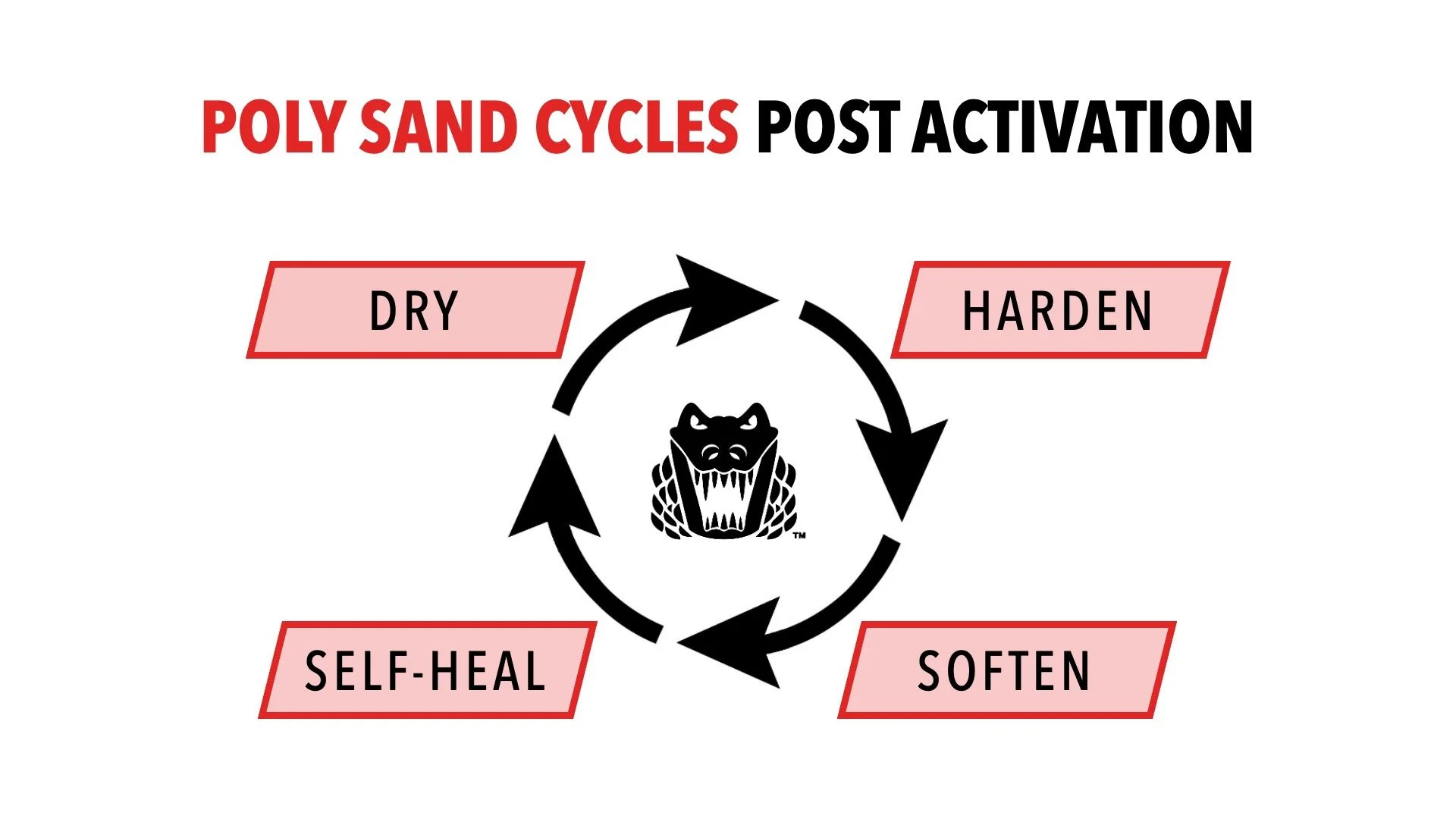Why Your Polymeric Sand Did Not Harden
“I recently installed polymeric sand on a patio. It looks great, but if you press on it with your finger, it feels soft.” This is real life feedback we received from a contractor. In fact, we hear this often, and there are a few reasons why your polymeric sand might not be setting up properly. In this blog post, we’ll explain what they are.
Polymeric sand cures by drying, and in order to fully set, it needs to dry out completely. If your polymeric sand didn’t harden up, there is most likely a moisture issue. If the joints remain wet after the installation, they will remain soft until they dry. Getting one initial complete drying cycle is very important to the long-term performance and lifespan of the product. This is why we always recommend checking the weather before starting a polymeric sand project.
However, the weather isn’t the only culprit that can cause joints to stay wet. Here are some other factors that might cause moisture issues and prevent the polymeric sand from fully drying:
Concrete overlay was done improperly
Use of stone dust
Installation on the north side of a house or in shade
Sprinkler systems
Improper patio pitch
Seasonal conditions (i.e. during Fall and early Spring when there are shorter days, lower temperatures, and wetter weather)
Lack of compaction (which causes sand to stay loose/fluffier and hold more water)
Also, if the base material is not pitched properly, moisture issues can occur. The crushed stone base should be pitched the same as the paver surface. It’s never a good idea to leave depressions in the crushed stone base, assuming that you will later make up for it with the sand setting bed. These depressions become puddles. When water wicks up through the joints, it will keep them wet in a seemingly mind boggling pattern to someone observing the situation from the top.
Conclusion
To conclude, there are several factors that can prevent polymeric sand from setting up properly. If the joints don’t dry out in the first couple weeks or so, the odds are that the sand has been compromised, even if it does eventually dry out. It’s critical for the sand to fully dry out early after the installation to ensure optimal performance.
Our Polymeric Sand For Dummies course covers everything there is to know about effectively working with polymeric sand. Check it out on-demand!



